#Queen of Bohemia
Text
Queen of Bohemia
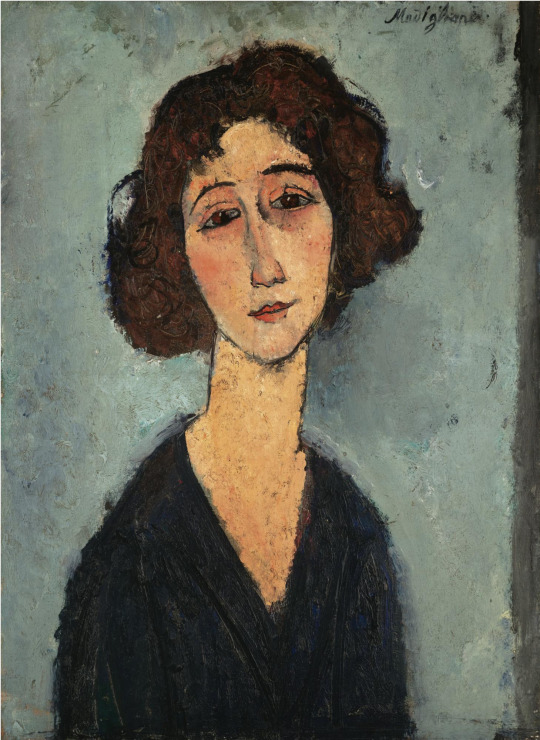
Amedeo Modigliani -Jeune Femme (Nina Hamnett) - 1917
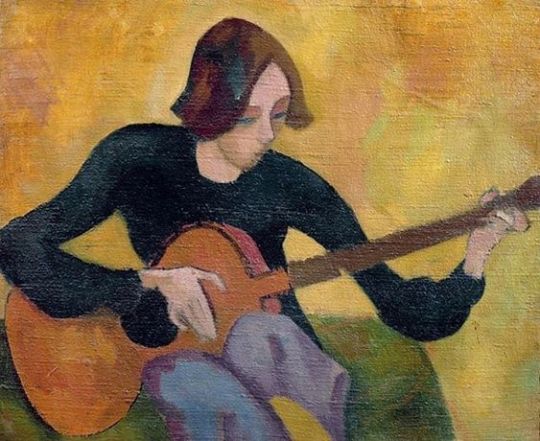
Roger Fry - Nina Hamnett avec une guitare - 1917
Nina Hamnett (1890–1956) was a Welsh artist and writer, and an expert on sailors’ chanteys, who became known as the Queen of Bohemia. Flamboyantly unconventional, and openly bisexual, Hamnett once danced nude on a Montparnasse café table just for the “hell of it”. She drank heavily, was sexually promiscuous, and kept numerous lovers and close associations within the artistic community. Very quickly, she became a well-known bohemian personality throughout Paris and modelled for many artists. She went on to have a love affair with Brzeska, and later with Amedeo Modigliani and Roger Fry.
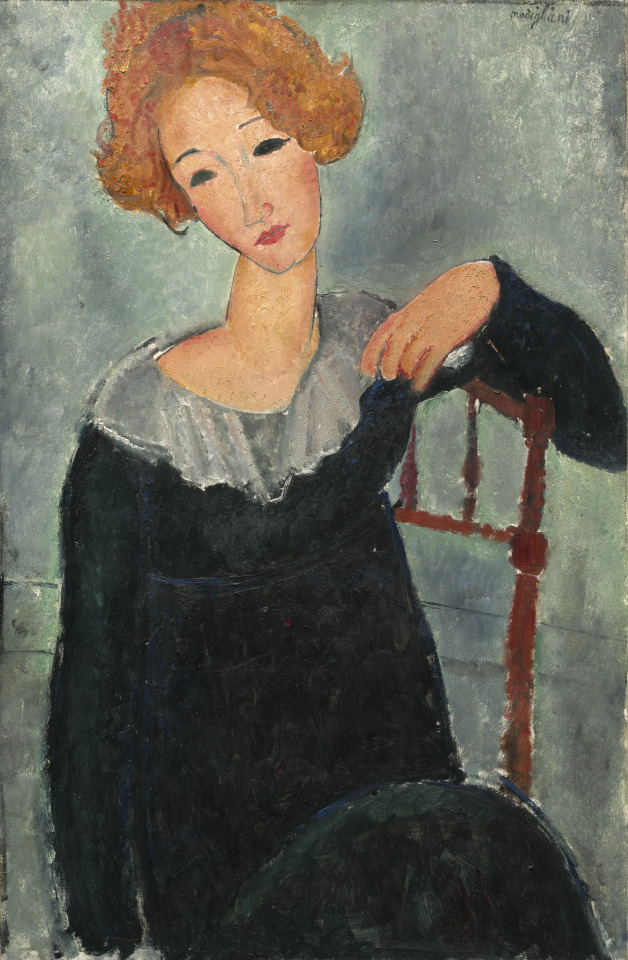
Amedeo Modigliani - Woman with Red Hair (Nina Hamnett) - 1917

Nina Hamnett - Self Portrait - 1913
British painter, designer, and illustrator, famous more for her flamboyant bohemian life than for her work. She was born in Tenby, Wales, the daughter of an army officer, and studied at various art schools in Dublin, London, and finally Paris. On her first night there she met the Italian painter Amedeo Modigliani. He introduced her to Picasso, Serge Dighilev, and Jean Cocteau, and she went to live at the famous artist’s residence of La Ruche which housed many other Bohemian artists and modernist writers. It was there that she met the Norwegian artist Roald Kristian (also known as Edgar de Bergen), whom she married in 1914. She seems to have been relieved when he was deported as an unregistered alien during the First World War; they never saw one another again.
Like other women at the time reveling in a newfound independence, she had her hair cut short in a ‘crophead’ style (what we would now call a basin cut) and she wore eccentric clothing:
"I wore in the daytime a clergyman’s hat, a check coat, and a skirt with red facings … white stockings and men’s dancing pumps and was stared at in the Tottenham Court Road. One had to do something to celebrate one’s freedom and escape from home."

Roger Fry - Nina Hamnett - 1917
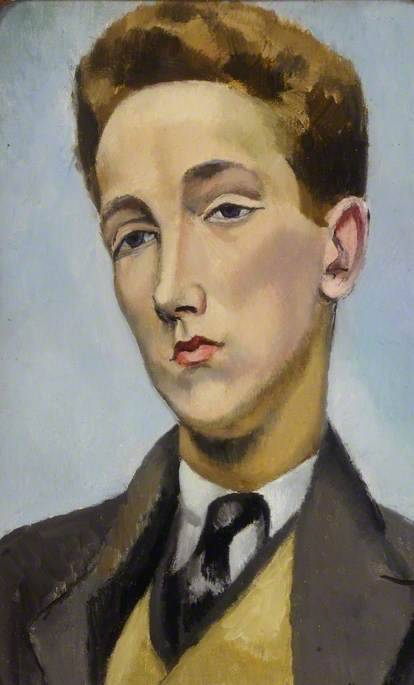
Nina Hamnett - "Rupert Doone" - Dancer - 1922

Nina Hamnett - "Dolores" - 1931
From 1913 to 1919 Hamnett worked for Roger Fry's Omega Workshops; Fry (with whom she had a love affair) painted several portraits of her. In the 1920s, she spent much of her time in Paris, where once again she knew many leading figures of the avant-garde, including Jean Cocteau and the composers Satie and Stravinsky.
During the 1920s (and for the rest of her life) she made the area in central London known as Fitzrovia her home and stamping ground. This new locale for arty-Bohemia was centred on the Fitzroy Tavern in Charlotte Street which she frequented along with fellow Welsh artists Augustus John and Dylan Thomas, making occasional excursions across Oxford Street to the Gargoyle Club in Soho.

Nina Hamnett - Illustrated Osbert Sitwell's "The People's Album of London Statues" - 1927
However, she often returned to London for exhibitions of her work, which included portraits, landscapes, interiors, and figure compositions (notably café scenes) in a robust style drawing on various modern influences. In addition to paintings, she made book illustrations (spontaneous pen-and-ink drawings), notably for Osbert Sitwell's The People's Album of London Statues (1928). From the 1930s the quality of her work declined, partly because of the influence of alcohol.
In 1932 she published a volume of memoirs entitled Laughing Torso, which was a best-seller in both the UK and the USA. Following its publication she was sued by Aleister Crowley, whom she had accused of practicing black magic. The ensuing trial caused a sensation which helped sales of the book, and Crowley lost his case.

Hamnett enjoying herself with some new friends
Her success in this instance only fuelled her downward spiral, and she spent the last three decades of her life propping up the bar of the Fitzroy trading anecdotes of her glory years for free drinks. She took little interest in personal hygiene, was incontinent in public, and vomited into her handbag.
Her ending was as spectacular as had been her previous life. Drunk one night she either fell or jumped from the window of her flat and was impaled on the railing spikes below.
#art#Nina Hamnett#Laughing Torso#Osbert Sitwell#artist#Queen of Bohemia#amedeo modigliani#paintings#drawings#roger fry#aleister crowley#picasso#hamnett#illustrations#modigliani
60 notes
·
View notes
Text
Be careful what you say around your kids...
Recently, I stumbled across this sad parallel between Sophie of Hannover and her niece Liselotte, Princess Palatine.
This first excerpt is from Sophie's autobiography. The following exchange happened at her mother's court in The Hague when she was between 9 and 11 years old and being compared to her little brother Gustavus Adolphus of the Palatinate (1632 – 1641):

Adolf Köcher [ed.], Sophie, Hannover, Kurfürstin: Memoiren der Herzogin Sophie nachmals Kurfürstin von Hannover, Leipzig 1879, p. 35.
[...] that Madame Gorin said, mustering us both, my little brother and I: "He is very handsome, but she is scrawny and ugly: I hope she does not understand English." But I only understood it too well to be agrieved, and I was quite sad, since I thought my deficiency to be without remedy.
From around 1640, let's skip to the winter of 1659/1660, when Sophie, then in her late 20s and pregnant with her first child, was back in The Hague visiting her mother, this time with her little niece Liselotte (1652 – 1722) in tow.
The following is an excerpt from a letter written by Elizabeth Stuart, ex-Queen of Bohemia, Sophie's mother and Liselotte's grandmother to her son Karl Ludwig, Elector Palatine, Liselotte's fater:
There was last night a sad business betwixt your sister [Sophie] and Lisselotte. She saide in English, that her brother [Karl, 1651 – 1685] had a better face than she had, which she vnderstood and manie a teare was shed for it, but I maintained that she had the better face, which must [most] ioyed her.
In: Dirk Van der Cruysse, "Madame sein ist ein ellendes Handwerck." Liselotte von der Pfalz – eine deutsche Prinzessin am Hof des Sonnenkönigs, Munich 1997 (4th ed.), p. 77f.
It's sad and quite telling to think that Sophie committed the same error as the adults of her own childhood, although perhaps Madame Gorin was more foolish in assuming that Sophie, whose mother was a Stuart and appears at least in private to have conversed with her children exclusively in English, could not speak English than the grown Sophie when she supposed that Liselotte did not know the language, seeing as she never received any formal instruction and had only been around her grandmother for a few weeks at this point.
It is however interesting to note that Liselotte appears to have at least had a working basic understanding of English and was a passable passive speaker, at least when a child visiting her English grandmother in The Hague.
This may have come in handy if she had not been married to the Duke of Orléans, since, had she remained a Protestant, Liselotte would have taken precedence over Sophie and her heirs in the Act of Settlement, seeing as she had one more male ancestor in the direct line.
Liselotte might even have been happy to accept a crown, seeing as she professed that she would rather have been born a boy, so she could succeed her father as Elector. ...And why be just a measly Elector if you could be Queen?
Elisabeth Charlotte I, the best Queen England never had-- and who at age 16 together with her aunt Sophie tried to convince her father that she really should be permitted to marry a certain young Dutchman by the name of William of Orange.
One wonders how history would have turned out had the Elector Palatine given in to Liselotte's wishes...
#sophie von hannover#liselotte#liselotte von der pfalz#madame palatine#17th century#18th century#elizabeth stuart#queen of bohemia#winter queen#william of orange#history#british history
20 notes
·
View notes
Text

Elizabeth Stuart, Queen of Bohemia (1642) by Dutch painter Gerard von Honthorst.
Despite not being overly affectionate to her children, Elizabeth was very involved in their education. Her daughters were also taught the classical languages alongside their brothers. According to author Nadine Akkerman, she even taught her children six languages herself! If she was present in these modern times, she would have been a teacher.
6 notes
·
View notes
Text
Béatrice de Bourbon
#xiv#béatrice de bourbon#capetian house of bourbon#queen of bohemia#daughter of louis i de bourbon & marie d'avesnes#second wife of jean l'aveugle#house of luxembourg#c-section ?
3 notes
·
View notes
Text
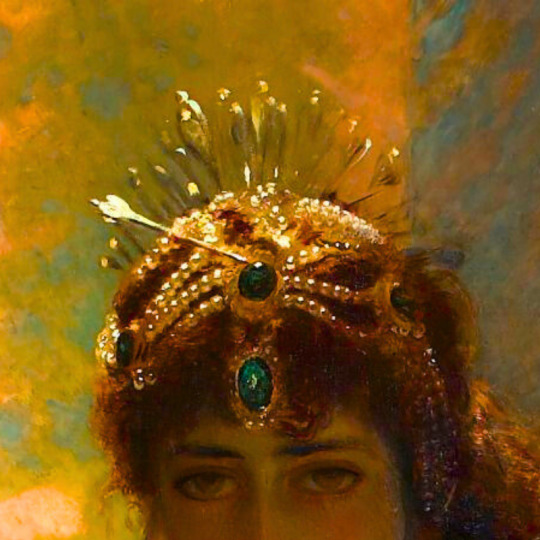
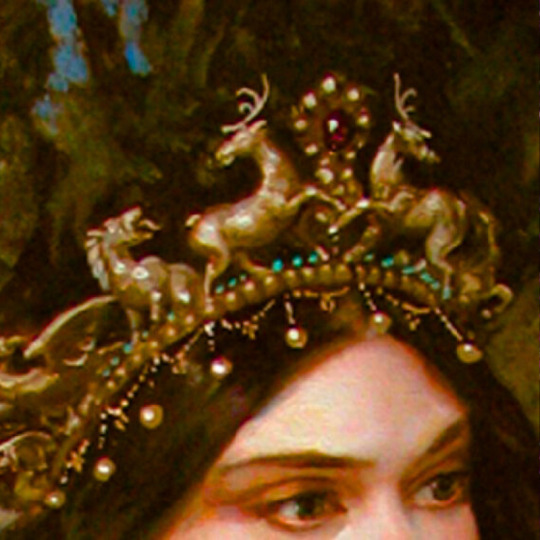
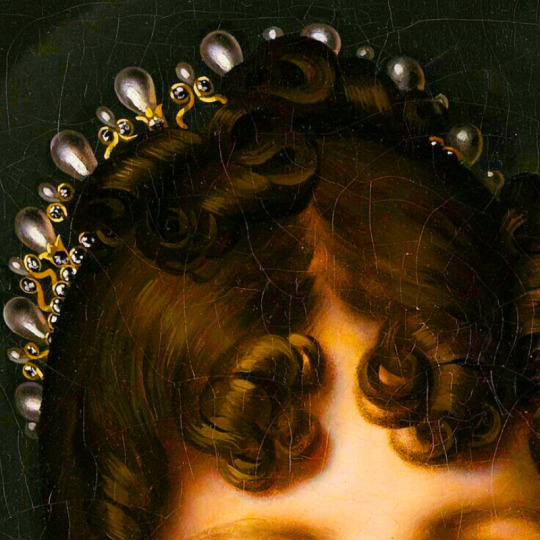
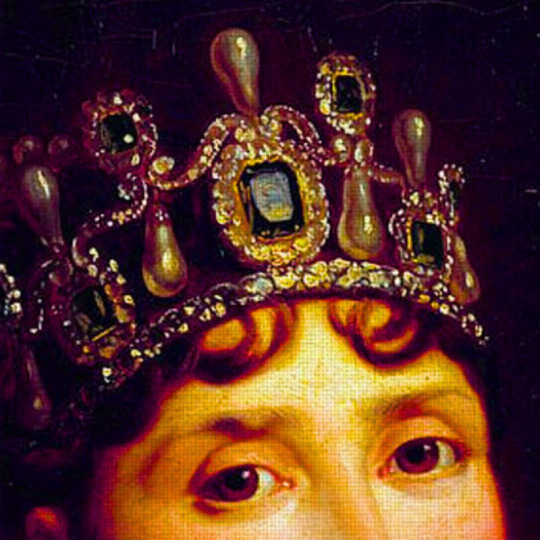
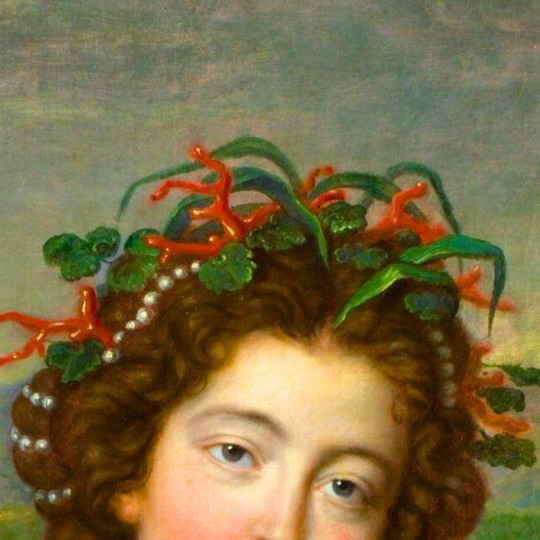
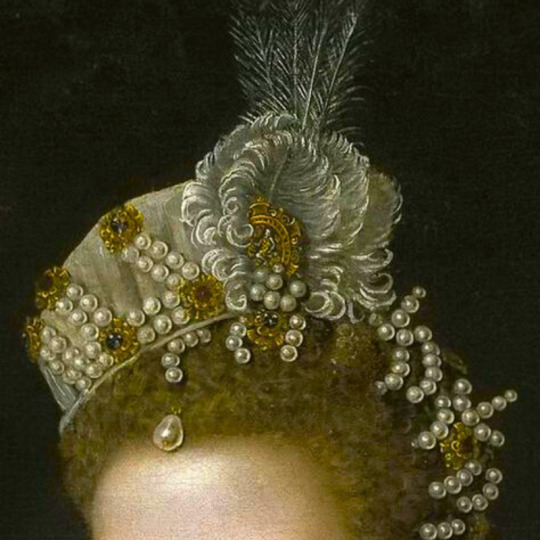
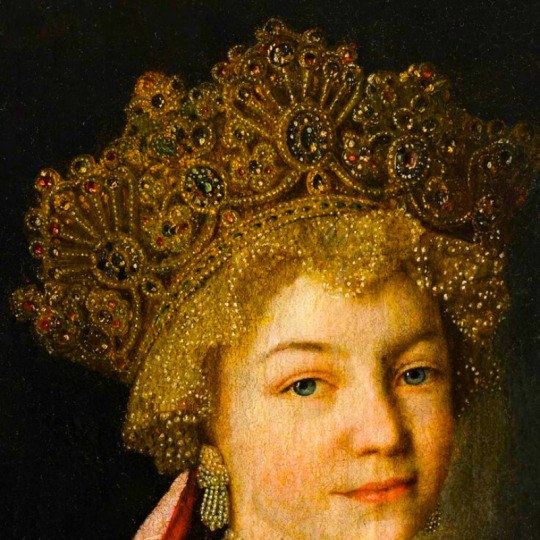
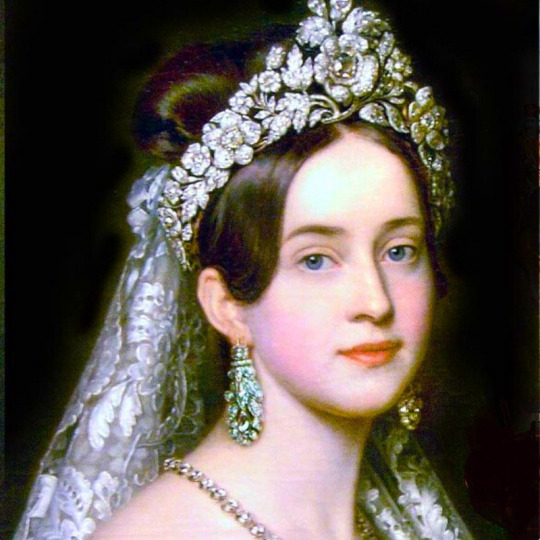
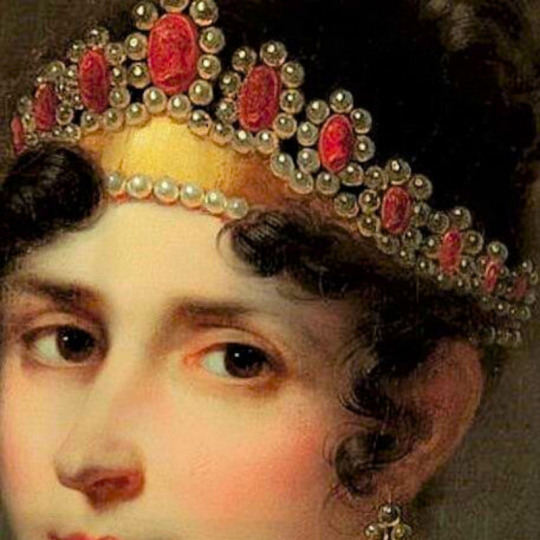
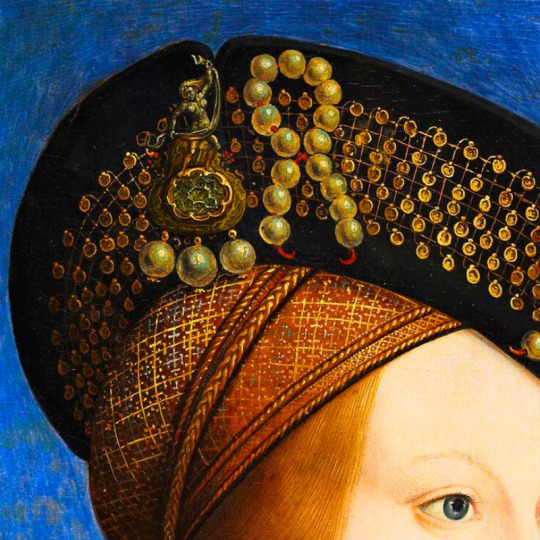
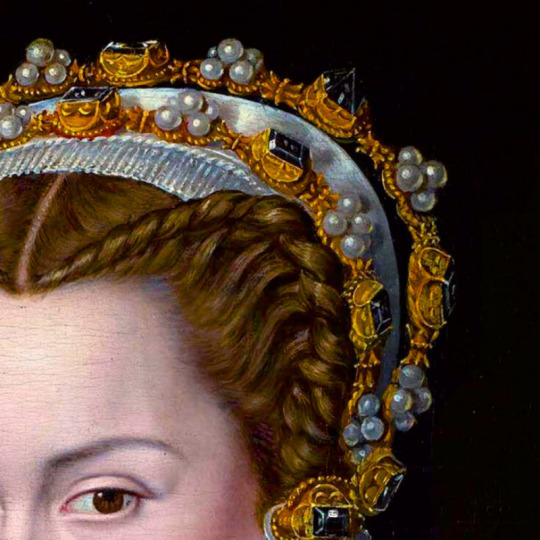

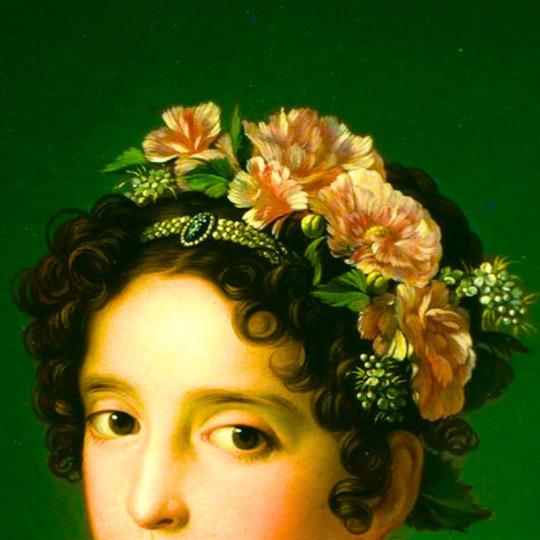
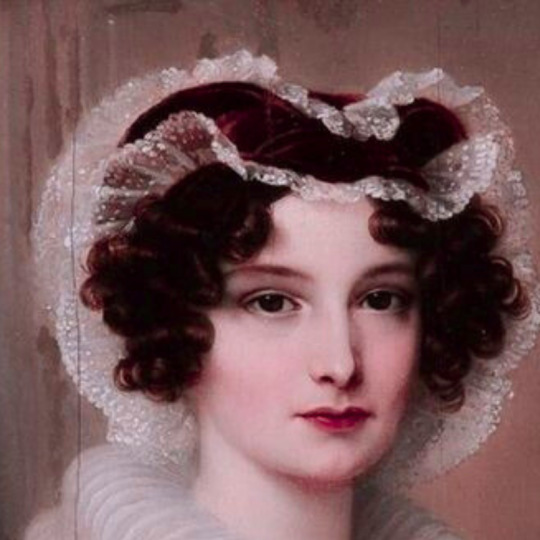
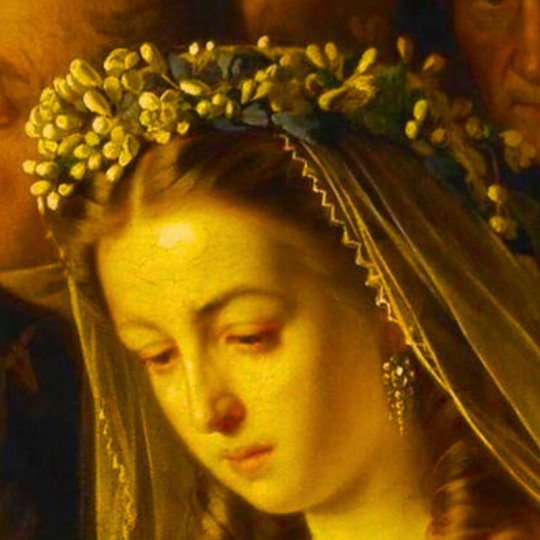
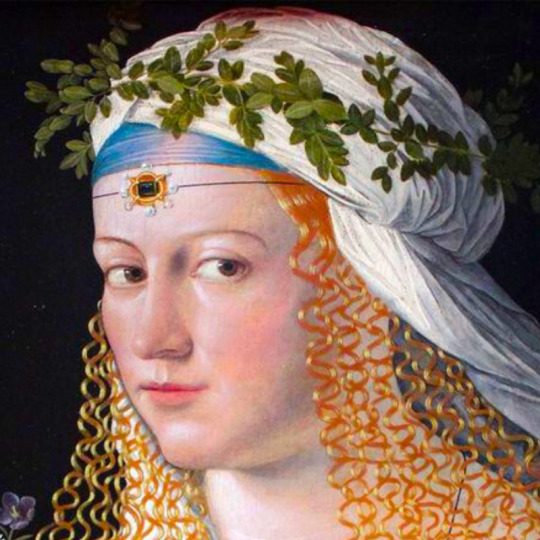
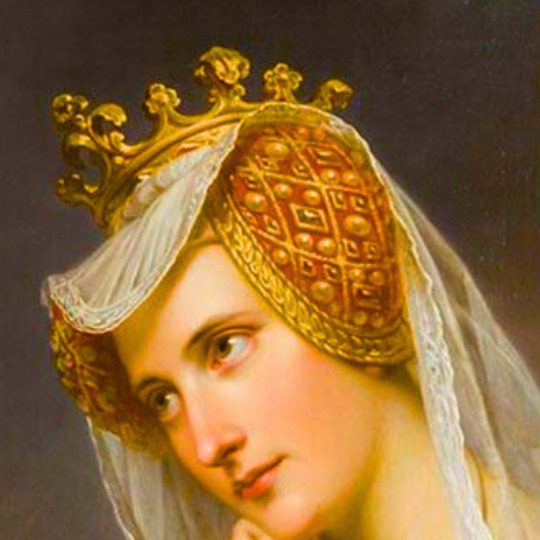
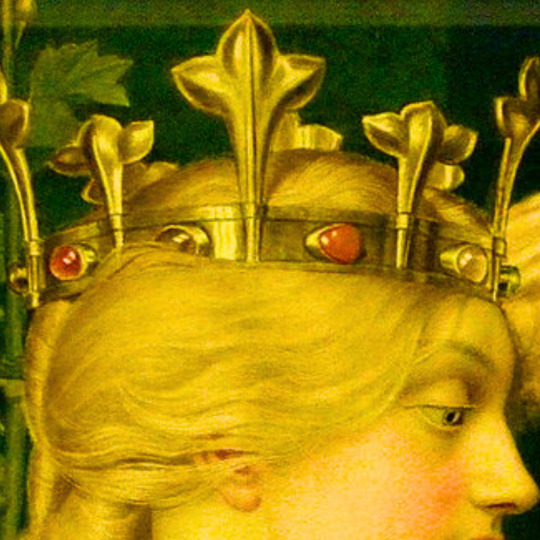
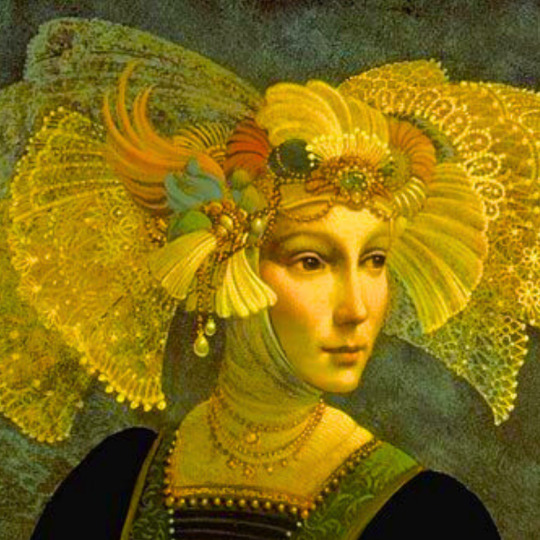

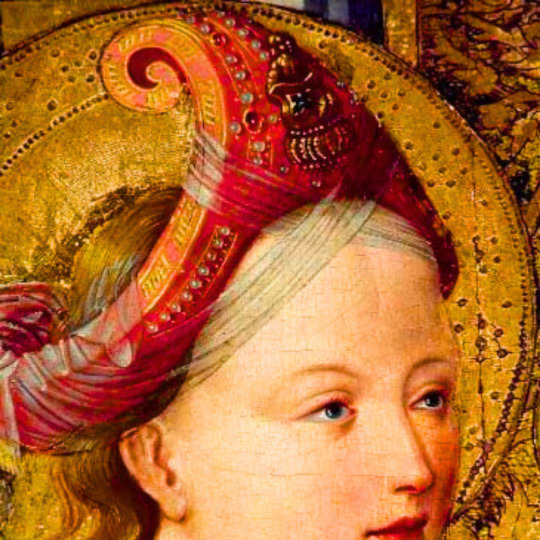
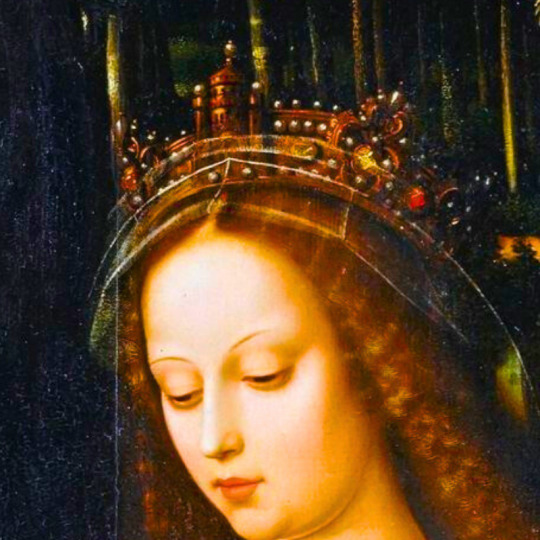
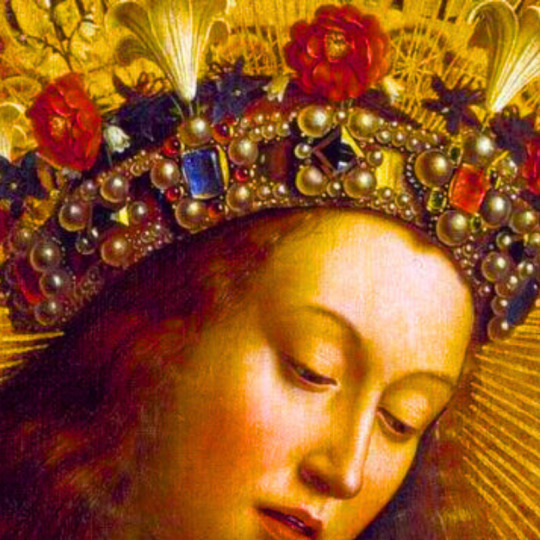
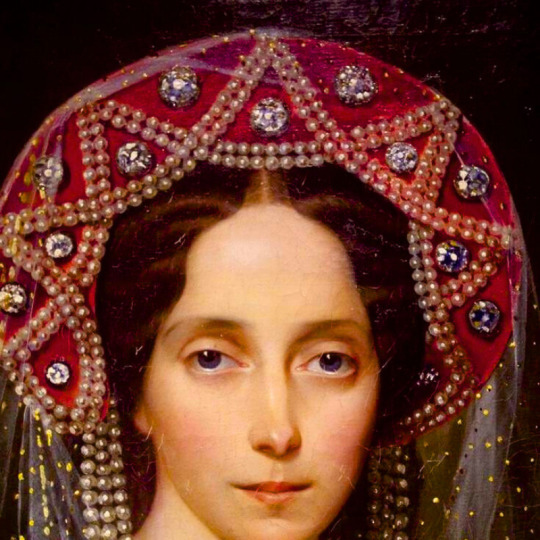
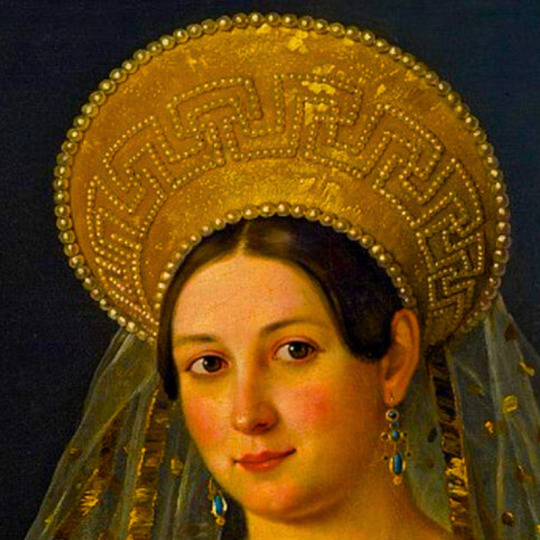

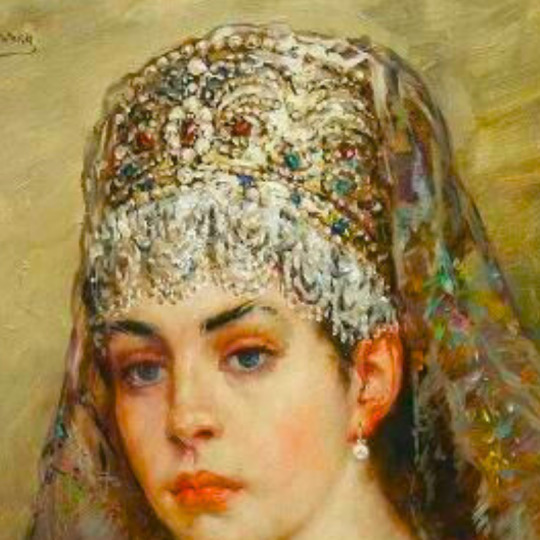
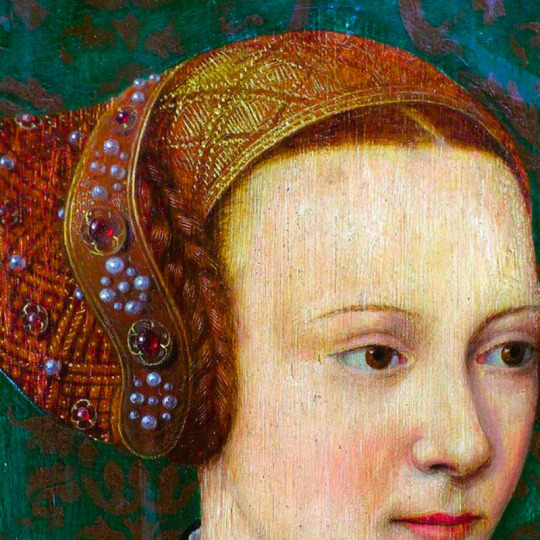
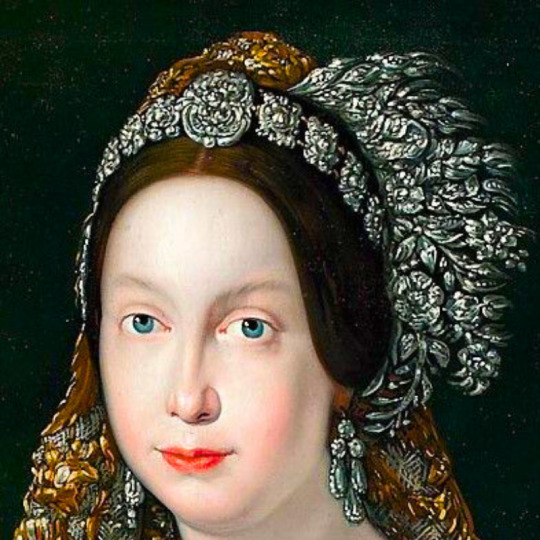

art + hair pieces
#orientatalin by edouard frederic wilhelm richter#cant find this one#this one either its tougher than you think to reverse search them#portrait of josephine de beauharnais by francois gerard#the marquise de seignelay and two of her sons by pierre mignard#infantin isabella clara eugenia at age 13 by alonso sanchez coello#grand duchess alexandra pavlovna romanova of russia but i cant find the artist#marie frederike amalie queen of greece by joseph karl stieler#empress josephine by jean louis viger#queen anna of hungary and bohemia by hans maler#elisabeth of austria by jooris van der straaten#anne wortley by paul van somer#manuela gonzalez velazquez tocando el piano by zacarias gonzalez velazquez#adelingen by heinrich friederich fuger#the unequal marriage by vasili pukirev#idealised portrait of a young women as flora by bartolomeo veneto#a portrait of a noble lady by jan adam kruseman#changing the letter by joseph edward southall#lorelei by james c christensen#the crucifixion by jacob cornelisz van oostsanen#saint dorothy i think this is the title its kinda confusing by i cant find the artist#saint barbara by ambrosius benson#virgin mary by hubert van eyck and jan van eyck#princess maria alexandrovna by ivan makarov#ladies in the blazon room of the winter palace by adolphe ladurner#queen marie therese and her son by charles beaubrun#boyar's wife by konstantin yegorovich#dont know the title but its by barthel bruyn the elder#queen isabella ii of spain by unknown artist#portrait of maria therese charlotte of france by antoine-jean gros
838 notes
·
View notes
Text
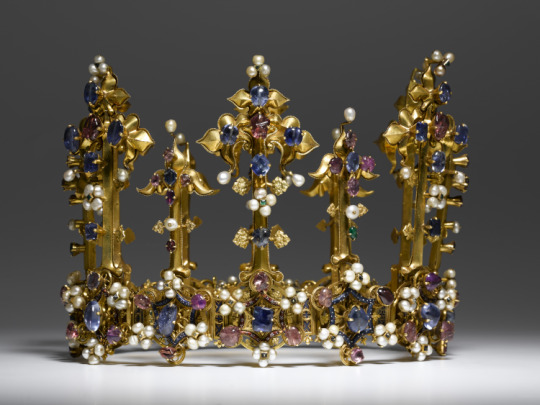
Gold Fleuron Crown, Circa 1380, Made For Anne Of Bohemia (1366-1394), Queen Of England
Blue and Pink Sapphires, Pearls, Other Precious Gemstones
Photo: Bayerische Schlösserverwaltung
Source: jewelryconnoisseur.net
#ancient crown#ancient jewelry#anne of bohemia#queen of england#royal jewels#royal crown#high jewelry#luxury jewelry#fine jewelry#fine jewellery pieces#gemville
583 notes
·
View notes
Text
As someone whose interest in the Middle Ages is set in the pre-WOTR eras, I occasionally read scholarship on it and sit there blinking because like. wow. wow. this is what being lost in the sauce is like. Historians are really so attached to their ideas of what people are like they've lost all sense of context
Like, I read Michael Hicks going on about how Elizabeth Woodville pursuing Sir Thomas Cook for queen's gold was evidence of harassment and an attempt to punish him twice even though Elizabeth's pursuit of queen's gold was hardly unusual. It also makes me wonder what Hicks would say about Anne of Bohemia pursuing William Courtenay, Archbishop of Canterbury for queen's gold to the point of having the sheriff of Kent distraining him (seizing his goods) until Courtenay complained to the king (and this is apparently despite the parliament declaring the month before Courtenay's complaint that queen's gold did not apply to payments made to enter archbishoprics).
I mean, the issue is reputation - Anne of Bohemia is "good queen Anne", typically depicted as passive and meek, while Elizabeth Woodville's reputation typically runs to the gold-digging, ambitious femme fatale and bad queen.
#wotr historiography is really that bad huh#blog#elizabeth woodville#anne of bohemia#william courtenay archbishop of canterbury#queen's gold#queenship#reputation and representation
11 notes
·
View notes
Text
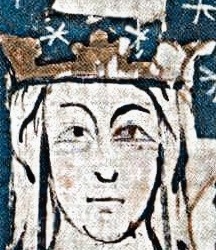

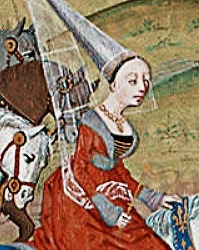


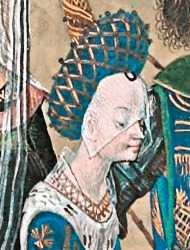


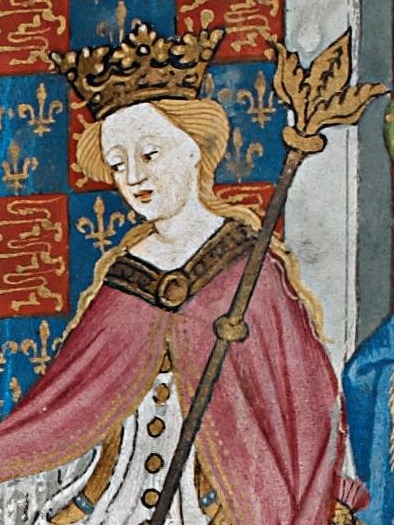

CONSORTS OF ENGLAND SINCE THE NORMAN INVASION (2/5) ♚
Eleanor of Castile (November 1272 - November 1290)
Margaret of France (September 1299 - July 1307)
Isabella of France (May 1308 - January 1327)
Philippa of Hainault (January 1328 - August 1369)
Anne of Bohemia (January 1382 - June 1394)
Isabella of Valois (October 1396 - September 1399)
Joan of Navarre (February 1403 - March 1413)
Catherine of Valois (June 1420 - August 1422)
Margaret of Anjou (May 1445 - May 1471)
Elizabeth Woodville (May 1464 - April 1483)
#my photoset.#history#historyedit#history edit#plantagenets#lancaster#house of lancaster#house of york#elizabeth woodville#margaret of anjou#catherine of valois#the king netflix#the white queen#joan of navarre#isabella of valois#anne of bohemia#philippa of hainault#isabella of france#margaret of france#eleanor of castile#royalty#royals#medieval history#medieval queens#queen consorts#war of roses#english history#historical royals#consorts of england#consorts of england and britiain.
139 notes
·
View notes
Text
MY DEAR Mr SHERLOCK HOLMES,
You really did it very well. You took me in completely. Until after the alarm of fire, I had not a suspicion. But then, when I found how I had betrayed myself, I began to think. I had been warned against you months ago. I had been told that if the King employed an agent it would certainly be you. And your address had been given me. Yet, with all this, you made me reveal what you wanted to know. Even after I became suspicious, I found it hard to think evil of such a dear, kind old clergyman. But, you know, I have been trained as an actress myself. Male costume is nothing new to me. I often take advantage of the freedom which it gives. I sent John, the coachman, to watch you, ran up stairs, got into my walking-clothes, as I call them, and came down just as you departed.
Well, I followed you to your door, and so made sure that I was really an object of interest to the celebrated Mr Sherlock Holmes. Then I, rather imprudently, wished you good-night, and started for the Temple to see my husband. We both thought the best resource was flight, when pursued by so formidable an antagonist; so you will find the nest empty when you call to-morrow
As to the photograph, your client may rest in peace. I love and am loved by a better man than he. The King may do what he will without hindrance from one whom he has cruelly wronged. I keep it only to safeguard myself, and to preserve a weapon which will always secure me from any steps which he might take in the future. I leave a photograph which he might care to possess; and I remain, dear Mr Sherlock Holmes,
Very truly yours,
IRENE NORTON, née ADLER.

WHERE ARE MY SHOWS AND FILMS OF IRENE ADLER BEING BOTH UTTERLY BADASS AND ENJOYING QUIET REGULAR EVENING CARRIAGE RIDES!?
WHERE'S THE PLATONIC RESPECT BETWEEN HER AND HOLMES!?
WHERE'S THE IRENE WHO BLACKMAILS A KING JUST TO BE LEFT THE FUCK ALONE WITH HER NEW BELOVED HUSBAND!?
WHERE'S HER HUSBAND FULL STOP!?!?
#shes a queen#a disrespected queen#cant belueve they make her and Holmes romantic#letters from watson#a scandal in bohemia#irene adler#Sherlock Holmes#john watson
40 notes
·
View notes
Text

Solaria/ aura by GHOST inspired!!!
#hard to find background pieces for this :ppp#and the hair took ages 💀#ghost and friends#love nikki#love nikki dress up queen#lnduq#miracle nikki#starry corridor#competition#my stuff#wasteland#Bohemia#aura ghost#solaria/aura#how to tag this????#ghost vocaloid
189 notes
·
View notes
Quote
The closeness of the royal couple's relationship was reflected in the architecture of their living spaces. Mary Whiteley compares the physical space of royal palaces in England and France. Between 1357 and 1368, Edward III remodeled part of Windsor Castle, which formed the main residence for Philippa of Hainault and their children. Philippa had given birth to two of their children at Windsor, Margaret in 1346 and William in 1348, and Edward held a number tournaments there, two of which were in celebration of Philippa's churchings in 1348 and 1355. Although Philippa's rooms were smaller and fewer in number than those of the king, the king and queen's chambers were on the same level and their bedchambers close together, despite the facts that by the completion of Edward's renovations, Philippa had already borne her last child in 1355.
In comparison, the rooms that Jeanne de Bourbon (1338-78), wife of French king Charles V, occasionally stayed in at the Louvre palace were on the same level below that of her husband, although similar in size and shape. In their familial residences of St-Pol and Vincennes, Jeanne's rooms were in an entirely different building, although with a connecting corridor at St-Pol. The difference in architecture may be attributable to their preferences or the relationships between the couples.
Despite his changes to Windsor, during Edward's reign, the layout of the queen's rooms at palaces such as Westminster remained similar to their original design for Eleanor of Provence, wife of Henry III, at a distance from public areas. Likewise, at Kennington, Edward the Prince of Wales, built rooms for his wife [Joan of Kent] overlooking the gardens and away from the public areas, with no processional access and distanced from Edward's rooms. The layout remained unchanged under Richard II and Anne of Bohemia. As Richard favoured this palace, perhaps because of the connection to his father, the unaltered states may have been sentimental rather than practical. However, the general changes in the principal royal residences, which had transformed the fortified castles of the twelfth century into more luxurious palaces by the fourteenth century, also reflect the increase in royal splendour under Edward III and Richard II. Although differences between the palace layouts represent general patterns in royal architecture, the layout of Windsor does suggest that Edward intended to live close to Philippa.
— Louise Tingle, Chaucer’s Queens: Royal Women, Intercession, and Patronage in England 1328-1394 (pages 22 and 23)
#historicalquotes#history#english history#medieval history#14th century#edward iii#philippa of hainault#otp: all this shall be done#edward the black prince#joan of kent#otp: my dearest and truest sweetheart#richard ii#anne of bohemia#otp: truly devoted to thee#kings#queens#jeanne de bourbon#house of plantagenet#charles v#french history#historical quotes#*hquotes
45 notes
·
View notes
Text
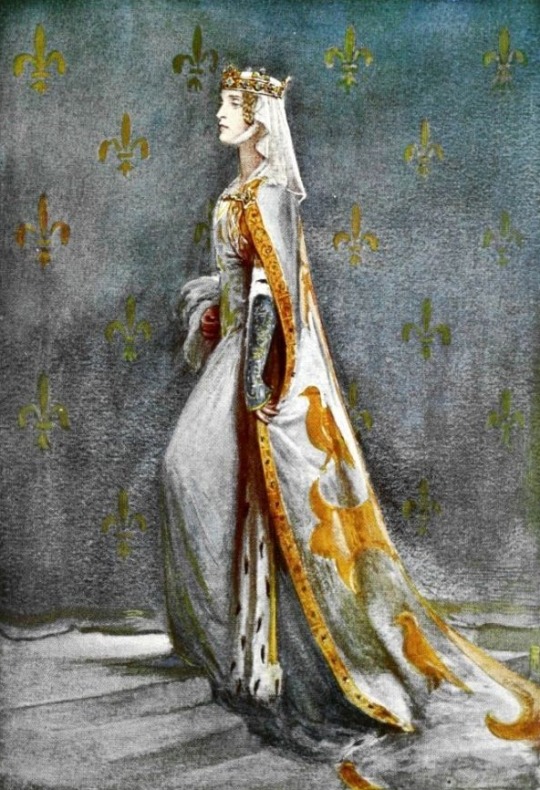
Anne of Bohemia – illustration by Percy Anderson for 'Costume Fanciful, Historical and Theatrical', 1906
#anne of bohemian#percy anderson#illustration#1900s#richard ii#14th century#middle ages#medieval#14th-century fashion#medieval costumes#1300s#monarchy#medieval monarchy#bohemia#medieval queens#queen of england#queens
39 notes
·
View notes
Text

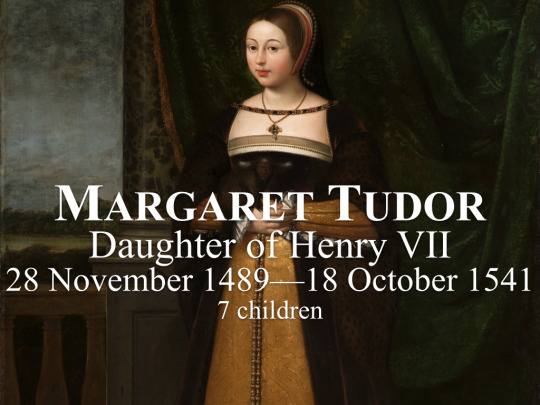


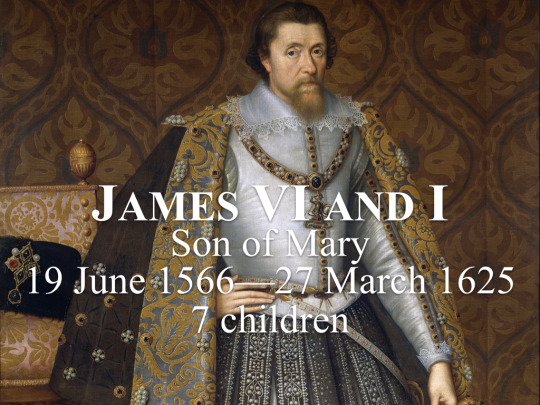
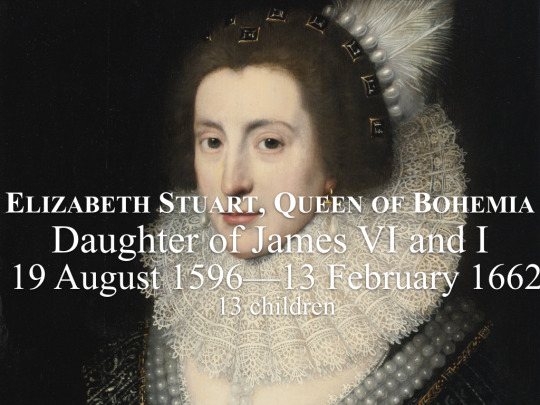

Descendants of the Tudors
#descendants of the tudors#henry vii#margaret tudor#james v#mary queen of scots#james vi and i#elizabeth stuart queen of bohemia#henry frederick hereditary prince of the palatinate
7 notes
·
View notes
Text
Blanche de Valois
3 notes
·
View notes
Text
We need more acab Sherlock fans.
#and more stories with Watson being disillusioned with the queen and military#I think Sherlock has a lot of potential when it comes to more anarchist story lines ( the og scandal in Bohemia is one canon example )#Sherlock Holmes
5 notes
·
View notes
